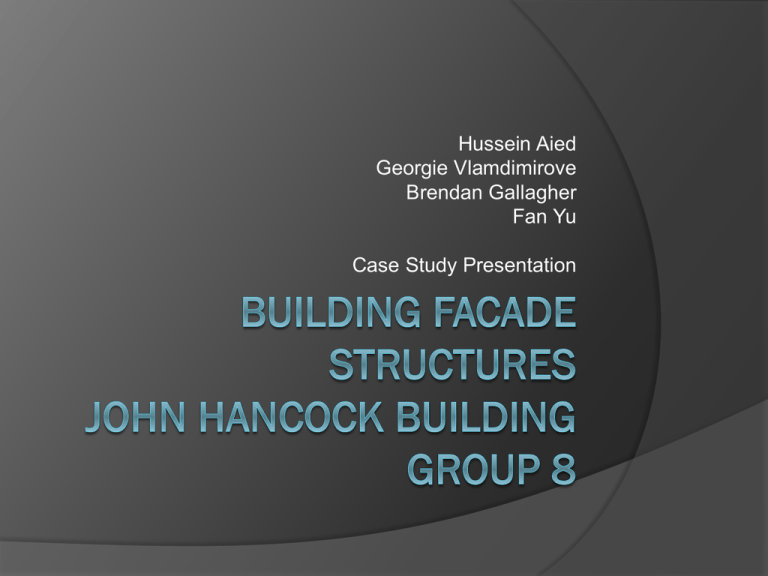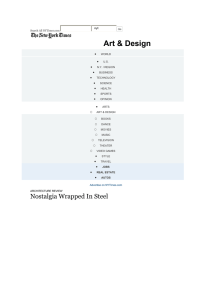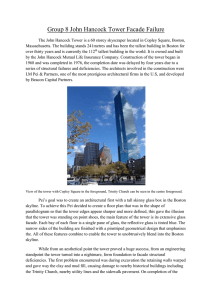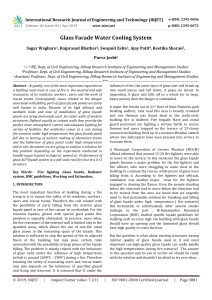Gp 8-John Hancock.ppt
advertisement

Hussein Aied Georgie Vlamdimirove Brendan Gallagher Fan Yu Case Study Presentation History of the Building A 60 storey (241) landmark skyscraper Is the tallest building in Boston and 166th in the world. Built for the John Hancock Insurance group Designed by Pei and Cobb and was completed in 1976. History of the Building Highly reflective window glass is tinted slightly blue, resulting in the Tower having only a slight contrast with the sky. It had flaws and its opening was delayed from 1971 to 1976. Its cost is rumoured to have rocketed from $75M to $175M. Construction and Design Errors Caving in of temporary retaining walls causing damage to surrounding buildings The structure was swaying to an unacceptable degree The most dangerous flaw was its faulty glass windows I.M. Pei and partners announced that it will be replaced by a heat-treated variety. Possible causes of failure Swaying motion causing excessive loads to the glass causing the glass to break and fall to the ground. Sharp rhomboidal shape of the building caused wind forces to produce “hot-spots” Another hypothesis was that the settlement of the structure caused the glass to crack. The Cause of Facade Failure After tests carried out by MIT in a wind tunnel. They found that the cause of the failure was due to the insulated units which were defectively manufactured. The chromium bond was performing so well that it would not allow for any expansion or contraction of the glass. The Cause of Facade Failure The cracking propagated resulting in some of the panes falling off. This disaster resulted in all 10,344 window units being replaced. Replaced by a heat treated variety at a cost of $5m to $7m. Conclusion The Building Facade is associated with both Human and managerial problems. Some of the materials used were relatively new in the construction industry More time was needed to investigate their properties. Conclusion We now realize that the face of the building is affected by due to the buildings movement. In order to construct a large-scale building, we must obtain sound technical fundamentals and lessons from this case study. Conclusion Thank you









